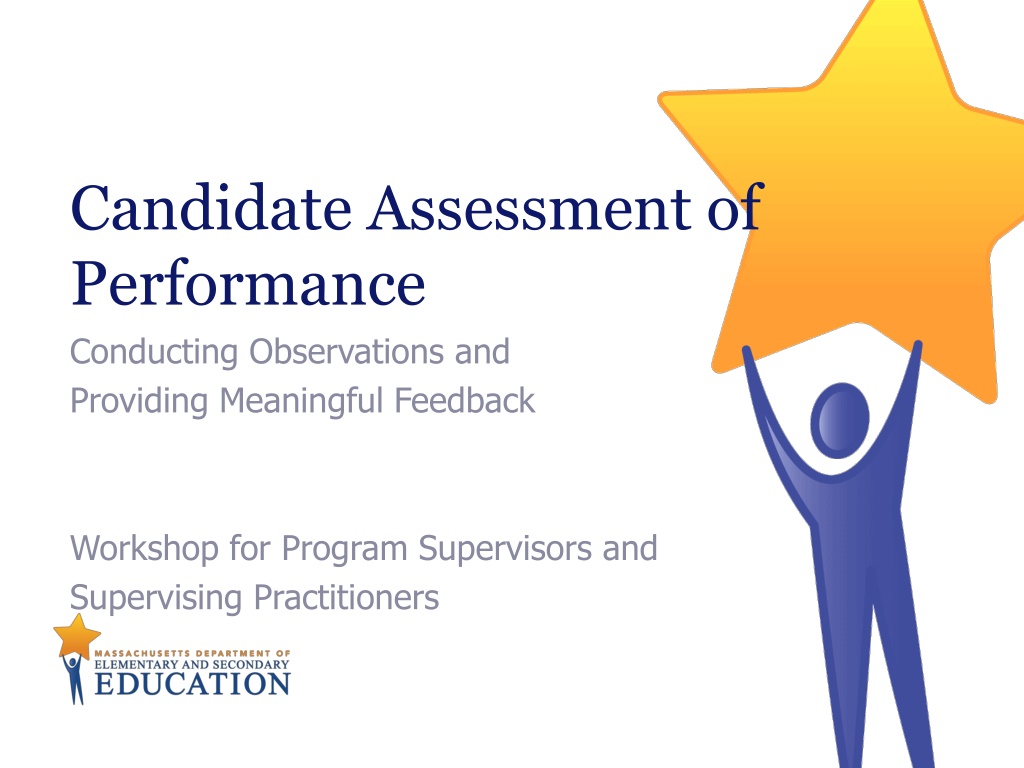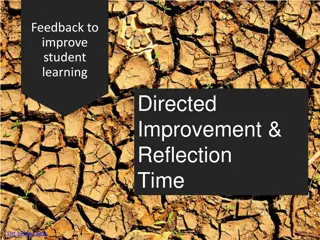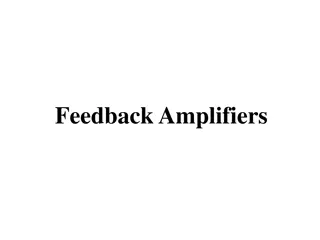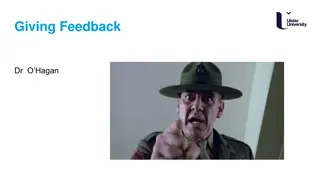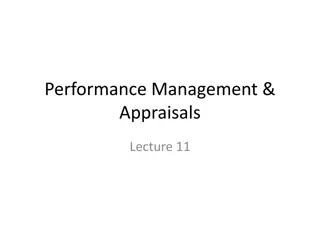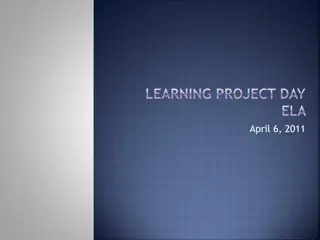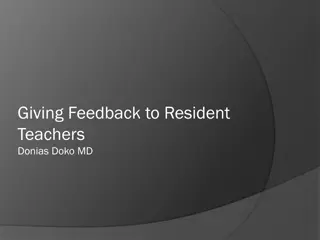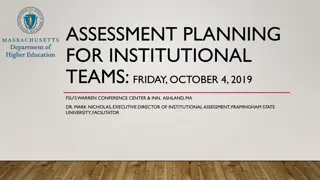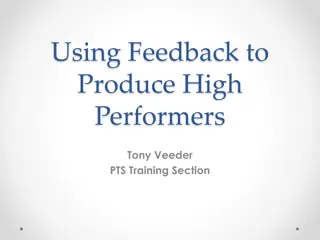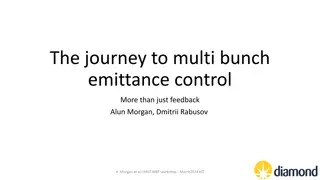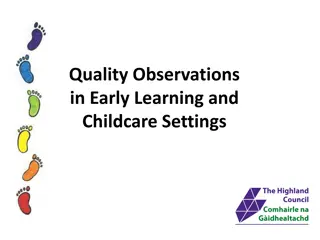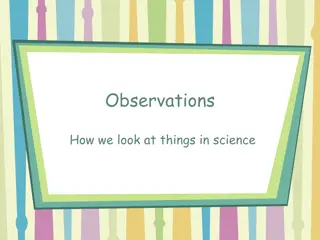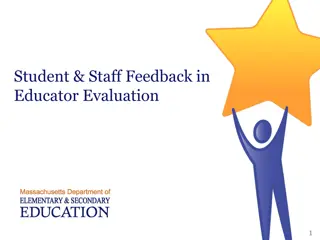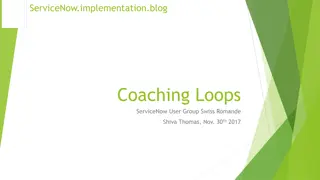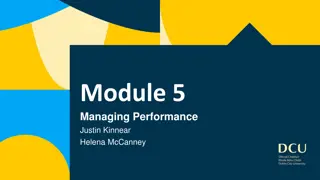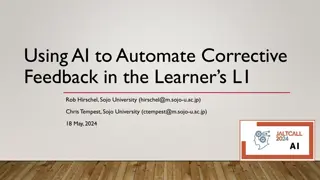Enhancing Performance Assessment Through Observations and Feedback
This workshop focuses on conducting effective observations and providing valuable feedback for program supervisors and supervising practitioners. It covers various aspects such as classroom observation techniques, feedback strategies, and the importance of evidence collection in the assessment process for candidate performance.
Download Presentation

Please find below an Image/Link to download the presentation.
The content on the website is provided AS IS for your information and personal use only. It may not be sold, licensed, or shared on other websites without obtaining consent from the author. Download presentation by click this link. If you encounter any issues during the download, it is possible that the publisher has removed the file from their server.
E N D
Presentation Transcript
Candidate Assessment of Performance Conducting Observations and Providing Meaningful Feedback Workshop for Program Supervisors and Supervising Practitioners
Learn from MA Teachers and Administrators about Observations and Feedback Observations and Feedback video Click here 3 Massachusetts Department of Elementary & Secondary Education
Warm Up Turn to a partner: What resonated with you? How do you currently conduct classroom observations (e.g., mostly short, unannounced; mostly longer, announced; using video; with a rubric)? How do you determine what feedback to provide following an observation? 4 Massachusetts Department of Elementary & Secondary Education
Learning Observations in CAP
Goals of CAP Provide candidates with opportunities to demonstrate the knowledge and skills they have gained in preparation. Support candidates growth and development through consistent, high quality feedback and evaluation. Ensure candidates are ready to make impact with students on DAY 1. 6 Massachusetts Department of Elementary & Secondary Education
The CAP Process CAP takes place throughout the practicum. Program supervisors, supervising practitioners, and candidates collect evidence of practice, which informs CAP ratings. Evidence includes: At least 2 announced and 2 unannounced observations At least one measure of student learning Student feedback Artifacts of the candidate s practice 7 Massachusetts Department of Elementary & Secondary Education
The Role of Observations Observations are a critical source of evidence collected by CAP assessors. Observations help assessors with two important tasks: Collecting and documenting evidence of performance for the 6 essential elements measured by CAP. Providing focused, actionable feedback to candidates about their performance. 8 Massachusetts Department of Elementary & Secondary Education
The Four CAP Observations Each source of evidence in CAP is designed to target a subset of the 6 essential elements focus elements. Adjustments to Diverse Needs Safe Learning Environment Expectations Structured Reflective Meeting Practice Practice Lessons Well- High Announced Observation 1 X X Unannounced Observation 1 X X Announced Observation 2 X X 9 Unannounced Observation 2 X Massachusetts Department of Elementary & Secondary Education
Components of a CAP Observation Active evidence collection DO document what is happening (e.g., teacher and student actions/behaviors). DO NOT make judgments about performance during the observation. Analysis and synthesis of evidence following the observation. Connect evidence to the 6 essential elements (required for at least the focus elements for the observation). Self-reflection by the candidate 10 Targeted feedback to the candidate Massachusetts Department of Elementary & Secondary Education
ESEs Model Observation Protocol 1. Before the Observation (for announced observations) Preparing for the pre-conference Conducting the pre-conference 2. During the Observation Actively collecting evidence 3. After the Observation Analyzing the evidence Preparing for the post-conference Identifying reinforcement/refinement objectives Conducting the post-conference 11 Massachusetts Department of Elementary & Secondary Education
Model Protocol: Before the Observation Pre-Conference (1-2 days prior to observation 20 min) Do not influence the candidate s plan Gather evidence such as lesson plans and materials in advance Prepare 2-3 questions for pre-conference to better understand lesson plans and collect additional evidence, such as: What do you expect students to know and be able to do at the end of the lesson? How is the lesson structured for students who progress at different learning rates? Let the candidate do most of the talking, but do help him/her reflect prior feedback when possible. 12 Massachusetts Department of Elementary & Secondary Education
Model Protocol: During the Observation Actively collect evidence without making judgments Options: scripting, videotaping, audio-recording Evidence collected during an observation is to aid assessor in identifying trends and selecting illustrative examples. ESE does not collect evidence from observations. 13 Massachusetts Department of Elementary & Secondary Education
Model Protocol: After the Observation Review evidence and sort using the evidence chart included on the CAP Observation Form. Not every piece of evidence collected needs to be sorted. Consult the CAP Rubric when sorting evidence. Evidence statements should say what happened in the observation that shows/does not show that a skill has been demonstrated. 14 Massachusetts Department of Elementary & Secondary Education
Model Protocol: After the Observation Prepare for the post-conference. If conducted jointly, the program supervisor and supervising practitioner should calibrate feedback before the post-conference. Collect self-reflection from candidate Identify 1-2 areas of reinforcement( keep doing what you re doing ) Should identify candidate s instructional strength in a way that encourages continuation of effective practices. Identify 1-2 areas of refinement( instead, try this ) Should identify areas in need of instructional improvement. 15 Massachusetts Department of Elementary & Secondary Education
Model Protocol: After the Observation Conduct the post-conference. (30 minutes) Post-conferences should occur after the assessor has had an opportunity to synthesize the evidence. Ask the candidate self-reflection questions related to areas of refinement (good source of evidence for the reflective practice element). Provide concrete suggestions for improvement and share resources/supports. Share observation form. Answer questions and confirm next steps. 16 Massachusetts Department of Elementary & Secondary Education
CAP Observation Forms Forms available for each of the four required observations. Indicate the focus elements for the observation, but accommodate evidence related to all 6 essential elements. Are not designed for use during an observation, but rather as tools for synthesizing evidence and sorting by element. 17 Massachusetts Department of Elementary & Secondary Education
Simulated Unannounced Observation In a moment we will watch a video of a 7th grade math lesson. Observe the lesson using ESE s Model Observation Protocol. Remember, engage in active evidence collection by recording teacher and student actions and behaviors without judgment. The focus elements for this lesson are: well- structured lessons and safe learning environment. 19 Massachusetts Department of Elementary & Secondary Education
Simulated Unannounced Observation Click here 20 Massachusetts Department of Elementary & Secondary Education
Simulated Unannounced Observation Analyzing the Evidence Using the observation form and the CAP rubric, sort evidence into the evidence chart. Not every piece of evidence collected needs to be sorted. Evidence may demonstrate that one or more of the dimensions of an element (quality, scope, consistency) are being met OR that performance is not yet at the expected threshold. Evidence statements should say what happened in the observation that shows/does not show that a skill has been demonstrated. 21 Massachusetts Department of Elementary & Secondary Education
Simulated Unannounced Observation Prepare for Post-Conference Turn to a partner and calibrate judgments based on evidence. Work together to complete the Post-Conference Planning Form. Use the guiding questions in the Model Observation Protocol to identify: 1-2 areas of reinforcement( keep doing what you re doing ); and 1-2 areas of refinement( instead, try this ). 22 Massachusetts Department of Elementary & Secondary Education
Simulated Unannounced Observation Whole-Group Discussion Round robin sharing of 1-2 reinforcement and refinement areas. Discuss: Were the indentified reinforcement/refinement areas consistent across all pairs? Are the identified resources and supports likely to help the teacher improve practice in the refinement areas? What concrete feedback would you provide the teacher during a post-conference? 23 Massachusetts Department of Elementary & Secondary Education
Assessor Calibration Calibration is the result of ongoing, frequent collaboration of groups of educators to: 1. Come to a common, shared understanding of what practice looks like at different performance levels and 2. Establish and maintain consistency in aspects of the evaluation process including analyzing evidence, providing feedback, and using professional judgment to determine ratings 25 Massachusetts Department of Elementary & Secondary Education
Assessor Calibration Calibration between program supervisors and supervising practitioners, which we just simulated in pairs, is essential in CAP to provide candidates with consistent feedback. Calibration across all program supervisors at a prep program is also important to establishing a common set of expectations for teacher candidates. Let s practice that now as a group. 26 Massachusetts Department of Elementary & Secondary Education
Assessor Calibration Simulation In a moment we will watch a second video of classroom instruction. This one features a 3rd grade classroom. Again, observe the lesson using ESE s Model Observation Protocol. Remember, engage in active evidence collection by recording teacher and student actions and behaviors without judgment. The focus element for this lesson is: adjustments to practice. After the video we will simulate a calibration activity that programs can use to build common expectations. 27 Massachusetts Department of Elementary & Secondary Education
Assessor Calibration Simulation Click here 28 Massachusetts Department of Elementary & Secondary Education
Assessor Calibration Simulation On your own: Using the observation form and the CAP Rubric, sort evidence into the evidence chart. Complete the Post-Conference Planning Form. Use the guiding questions in the Model Observation Protocol to identify: 1-2 areas of reinforcement( keep doing what you re doing ); and 1-2 areas of refinement( instead, try this ). 29 Massachusetts Department of Elementary & Secondary Education
Assessor Calibration Simulation In teams of 3-4, conduct a peer review of a group member s feedback to the teacher: Choose 1 person to be the subject. The subject will read aloud his/her feedback to the teacher from the Post-Conference Planning Form. The remaining team members discuss their assessments of the feedback and make suggestions to improve the feedback. The subject listens silently. The subject then responds to the team members assessment. The group listens silently. Together the team brainstorms specific ways to make the subject s feedback stronger. 30 *Choose a new subject and repeat the process as time permits. Massachusetts Department of Elementary & Secondary Education
Assessor Calibration Simulation As a whole group: Each team shares the following with the full group: Exemplars of feedback to the teacher and why they felt they were exemplars. One new common understanding or practice the team will adopt. 31 Massachusetts Department of Elementary & Secondary Education
Recap Observations are a critical source of evidence in CAP. The goal of observations in CAP is two-fold: 1. Collecting and documenting evidence of performance for the 6 essential elements measured by CAP. 2. Providing focused, actionable feedback to candidates about their performance. ESE s model observation protocol describes key steps that should be taken before (for announced observations), during, and after each observation. 33 Massachusetts Department of Elementary & Secondary Education
Recap Evidence collected during observations should document teacher and student actions and behaviors without judgment. After the observation, assessors should analyze the evidence to identify trends and select illustrative examples of the educator s practice to ground feedback. Feedback must be focused and actionable and be accompanied by specific strategies or supports available to the educator. Calibration between program supervisors and supervising practitioners and across all program assessors is essential to delivering a consistent CAP experience for candidates. 34 Massachusetts Department of Elementary & Secondary Education
Questions? 35 Massachusetts Department of Elementary & Secondary Education
